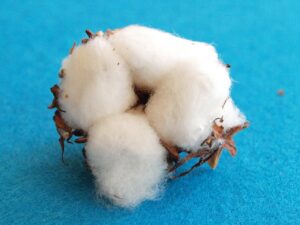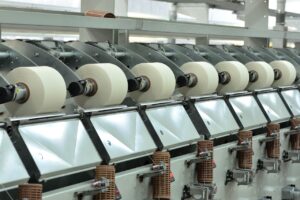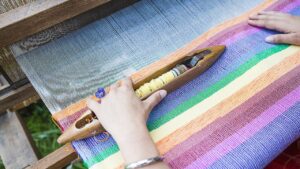
Humans are the best creatures of God and they have some basic needs, including food, clothing, and shelter. The history of textiles dates back to prehistoric times when early humans used plant fibers, animal hides, and woven reeds to protect themselves from harsh environmental conditions. However, in today’s civilized society, clothing is essential for expressing culture, status, and technological advancement. From the earliest textiles to today’s smart textiles, the evolution of textiles is an impressive journey that mirrors human creativity. Again, in this civilized society, clothing is a top priority. The textile and apparel industry is one of the largest global industries, employing millions of people worldwide.
Everybody knows about clothing, but most people don’t know, “What is Textile?” and how clothes are made. Many processes are required to produce a piece of garment or clothing. From high-end luxury fashion to everyday garments, textiles contribute significantly to the economy. China, India, Bangladesh, and Turkey are major textile-producing countries, exporting fabrics and clothing to markets around the world.
Here we can say that textile is a technology, and clothing is a part of textile. On this website, we try to discuss this sector in detail.
Raw Materials of Textile

Fiber is the raw material of textiles and the smallest fabric component. The discovery of flax fibers dating back 30,000 years in a cave in Georgia indicates the long history of textile use. There are two types of fibers used in textiles: natural and synthetic fibers.
Natural Fiber
Natural fibers are eco-friendly and comfortable to wear. They are made from natural elements like plants or animals, such as cotton, wool, silk, and linen. These fibers are good for health and daily use. They are biodegradable, eco-friendly, and have been used for centuries in textiles.
Synthetic Fiber
Synthetic fibers are produced from chemical substances. Examples include polyester, nylon, acrylic, and spandex. These fibers are generally used in clothing, upholstery, and industrial applications. Synthetic fibers are known for their durability, wrinkle resistance, affordability, lightweight properties, and use in home furnishings.
Textile Industry Segments
The textile industry can be divided into four main parts:
- Yarn Manufacturing
- Fabric Manufacturing
- Dyeing or Wet Processing
- Garment Manufacturing
Yarn Manufacturing

Yarn manufacturing is the process of converting raw fibers like cotton, wool, silk, linen, polyester, nylon, and acrylic into yarn by twisting them together and winding them onto bobbins. A good yarn possesses strength, durability, uniform thickness, low hairiness, flexibility, and softness. Yarns are then used to make different kinds of fabric through weaving and knitting. There are several steps in yarn manufacturing:
- Fiber Preparation
- Carding
- Combing
- Drawing
- Roving
- Spinning
Fabric Manufacturing

Fabric manufacturing is the process of converting yarns or fibers into fabric used in clothing, home furnishings, and industrial applications. The process involves different techniques. The most common methods are:
Weaving
Weaving involves two sets of yarns (warp and weft) interlaced at right angles on a loom. Woven fabrics include cotton, denim, and satin.
Knitting
Knitting interlocks loops of yarn to create stretchable fabrics, such as jersey, wool, and synthetic knits. It is widely used in making t-shirts, sweaters, and sportswear.
Additionally, there is another manufacturing system known as Non-Woven Fabric, which is produced without weaving or knitting by bonding fibers through heat, chemicals, or mechanical means. Examples include felt, disposable medical fabrics, and geotextiles.
Dyeing

Dyeing is the process of applying dyes or pigments to textile materials such as fibers, yarns, and fabrics. Dyeing is usually done in a dye bath containing special solutions with dyes, chemicals, and salt. Dye molecules are fixed to the fiber, yarn, or garments by absorption, diffusion, or bonding with temperature and time.
There are different types of dyes in the textile industry, including natural and synthetic dyes. Modern dyeing techniques focus on eco-friendly solutions, such as waterless dyeing.
Dyes are categorized based on their chemical structure and application process:
- Direct Dyes (For Cotton Fiber)
- Reactive Dyes (For Cotton Fiber)
- Basic Dyes (Cationic Dyes)
- Acid Dyes (Used for protein fibers like wool and silk)
- Vat Dyes (Insoluble dyes, used for Denim)
- Azoic Dyes (For cotton, viscose, rayon, and blended fiber)
- Disperse Dyes (Used for polyester and synthetic fibers)
- Sulphur Dyes (For Cotton Fiber)
Garment Manufacturing

Garment manufacturing is the final stage of the textile industry and is directly related to fashion technology. It starts with fabric and ends with the finished product or clothing. This multi-step process includes design, fabric selection, pattern making, cutting, sewing, finishing, and packaging.
The garment manufacturing process follows these steps:
- Design & Product Development
- Fabric Sourcing & Selection
- Pattern Making & Grading
- Fabric Spreading & Cutting
- Sewing & Stitching
- Washing & Finishing
- Garment Quality Control & Inspection
- Packaging & Shipping
In this discussion, we aim to explore the textile industry. As global demand for textiles continues to grow, innovation will be key to making the industry more efficient, ethical, and eco-friendly.